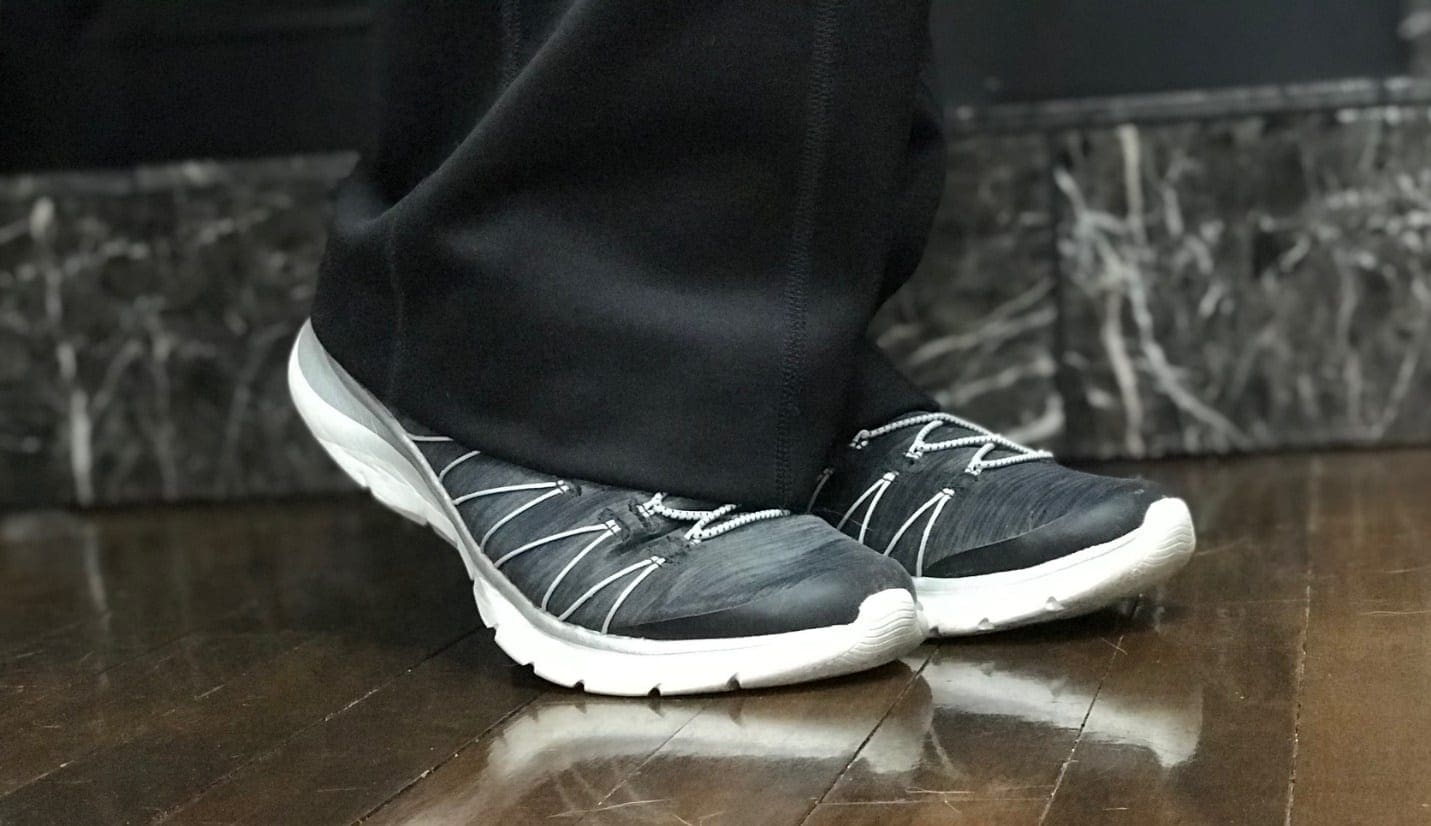Easy Designer Tips for Simple T-Shirt to Tote Bag Transformations
How to Turn a Simple T-Shirt into a Tote Bag!
If you have ever wanted to upcycle a t-shirt into a tote bag, but were disappointed with online tutorials, then this blog post and easy designer tips are for you. I’m sharing my secrets for transforming your favorite t-shirts into designer style tote bags. These are the crucial details no one seems to be discussing but are essential secret elements for achieving fantastic designer style results!
The Backstory
Years ago, I found an affordably priced line of printed t-shirts at Christopher & Banks that looked designer inspired. I loved them so much, that each time a new shirt was released I would buy it. It seemed like they were the only shirts I wore for almost two years and at last count, I had amassed over 30 shirts. Over time, the store embraced a new design esthetic, and they discontinued those t-shirts. I was heartbroken. In an effort to preserve my T’s, I refrained from wearing them daily. Overtime, I lost weight, and the shirts were too big. I carefully packed them away since I couldn’t give them up. I was hopeful I would find a new way to enjoy my shirts.

My favorite was a black and white shirt that had a beautiful Roman Coliseum design printed on the front. After much thought, I decided to upcycle it into a tote bag. I had a few ideas of how to start, but I wanted to collect as much information as possible before I cut up my beloved shirt. To my surprise, most t-shirt tote bag tutorials didn’t really value the shirt and had long term, bag durability issues. These tutorials considered t-shirts cheap and disposable. The problem was, I wanted to TRANSFORM my shirt and ENJOY it in a new format. I didn’t want to throw it away after a few uses. After researching various sewing products and vetting various ideas, I developed a gameplan.
Step 1: Easy Designer Tips T-shirt Prep
Before starting, carefully examine your t-shirt. Look for stains, holes, tears, missing embellishments (i.e., rhinestones) and any blemishes that may impact your bag. Make notes of any findings.
Next, wash and dry your t-shirt according to the manufacturer’s instructions. Re-examine the shirt and determine if any of the stains or blemishes have changed. Make notes of all your findings. Use either tailor’s chalk or a washable fabric marker to highlight these flaws. Will these discoveries impact your overall bag design? Will you need to modify the bag size or layout? If so, make notes. You never want to start a project and make a discovery like this midway. Once you have a general idea of how much focal fabric you have, you can select a bag pattern that works best. You will also need to buy additional coordinating fabric for the back, pockets, and liner. No t-shirt supplies enough material for every part of the bag. If you want to upcycle as much fabric as possible, consider using jeans or twill pants.
I decided to split my t-shirt design in 2 pieces so I could make two different bags.
I needed additional fabric, so I purchased:
- a printed complimentary quilting fabric for the back of each bag
- plain black quilting cotton for the liners
- black cork fabric for the handles
If you are using a purchased pattern, check it for the necessary yardages.
If you are using a purchased tote bag pattern, it’s time to evaluate the layout on your t-shirt. Try to center the design on the bag front. Make sure you are happy with the layout before cutting. If not, decide if you need to adjust the placement of the fabric or change patterns. Now is the time to make any necessary design changes. I decided to draft my own pattern to fit the t-shirt design.
Step 2: Selecting fabrics and Cutting the T-shirt
To start, cut along the side, sleeve, and shoulder seams. Separate the front and back and the sleeves. Set the sleeves aside and determine if you will be using both the t-shirt back and front. NEVER throw away any fabric until you have finished your project!!

Apply Stabili-tee or EZ Tee Stabilizer by Heat n Bond to the wrong side of the t-shirt fabric pieces you will be using. This fusible woven interfacing will stop the jersey knit material from stretching. Follow manufacturer’s application instructions.
BEFORE CUTTING EXACT SIZED PATTERN PIECES, QUILT YOUR FABRIC PIECES!!
Most tote bag patterns require you to quilt your fabrics before assembling and use traditional batting. I’ve found that by using a product called Pellon Flex-Foam™ Sew-In Stabilizer, I achieved a quilted look and structure that is usually only found in higher end designer bags. I was able to quilt my t-shirt front directly on the foam without adding additional fabric layers. On the front, I free-motion stitched around the design elements. On the back, I drew a traditional diamond print and used the straight stitch.
This technique enabled me to add inside pockets to the lining fabric and more easily add magnetic snap closures on the inside.


If you are adding a magnetic snap closure to the top of your bag, it is extremely important to interface the area. I used Tailor’s Canvas. It is extremely durable and withstands heavy use.

Step 3: Assembly
After every piece is cut and prepped, it’s time to assemble the bag. Follow the tutorial’s directions for assembly. I decided to draft my own pattern and kept the designs as simple as possible so I could showcase the t-shirt fabric.
One important consideration is how to create a base stabilizer for the bottom of the bag. Some bag creators use cardboard that must be removed prior to washing. Others use pre-made acrylic inserts. I used a double-sided fusible product called Craf-Tex Plus by Bosal. It is made specifically for stabilizing bags, totes, boxes, etc. It is an excellent choice for achieving a professionally finished appearance!
Step 4: Finishing Touches
To achieve that designer look, upgrade your finishing touches. I cannot stress the importance of considering those small details in achieving a designer finish! Instead of using webbing for your bag handles, consider faux leather or cork fabric straps. Also, reinforce stress points like the top of your bag or pockets with heavier fabrics like cork and rivets.
Your hardware selection will say a lot about your bag. Grommets, rivets, magnetic closures, clips, purse feet, etc. are often the first thing someone will notice when looking at a bag. So, if you plan to resell your designs, take the extra step, and invest in the finishing touches.

Sallie Tomato has an amazing assortment of hardware, zippers, bag patterns, and bag appropriate fabrics (like cork and faux leather). I love the quality and affordability of their products! I used the Textured Loop Strap Connectors, ¾” Magnetic Snaps, and Bag Feet ‘Bucket’ in “Nickel,” on my bag. Almost all their hardware is available in 5 different metal finishes so you can select the best color for your bag.



Hopefully after reading this article, you will consider upcycling one of your beloved shirts into a tote bag! This not only saves fabric from ending up in landfills, but it also enables you to enjoy a fun sewing project with material that you already own.
As a handy reference, here is a list of all the stabilizers and hardware that I used on my bag:
- Stabili-Tee™ Fusible Interfacing
(if this is not available, you can use “EZ-Tee Stabilizer by Heat n Bond”) - Pellon Flex Foam™, Sew in Style #FF77
- Tailor’s Canvas, Style #873
- Craf-Tex Plus by Bosal, Style #337F
- ¾” Textured Loop Strap Connectors, Style #STS156S
- Bag Feet Bucket .5 Nickel, STS101S
- ¾” Magnetic Snap Closure, STS158S
You can also use my Coupon Referral Code with Sallie Tomato: CHRIW60
If this tutorial and easy designer tips have helped you, please consider sharing it with others on social media. Also, be sure to sign up for The Creative Sewist email list so we can send you helpful sewing advice.
If you have any questions or comments, please leave them below.
Please note: This article does contain affiliate links.
We are a participant in the Amazon Services LLC Associates Program and Sallie Tomato, affiliate advertising programs designed to provide a means for us to earn fees by linking to Amazon.com and its affiliated sites as well as Sallietomato.com.
There is no additional cost to you when you make a purchase through any of my affiliate links. All items listed above were used in this tutorial.
CHRISTINE WARREN
Sewing isn’t just my job, it’s my passion. I’ve enjoyed sewing and needle working since I was very young.















